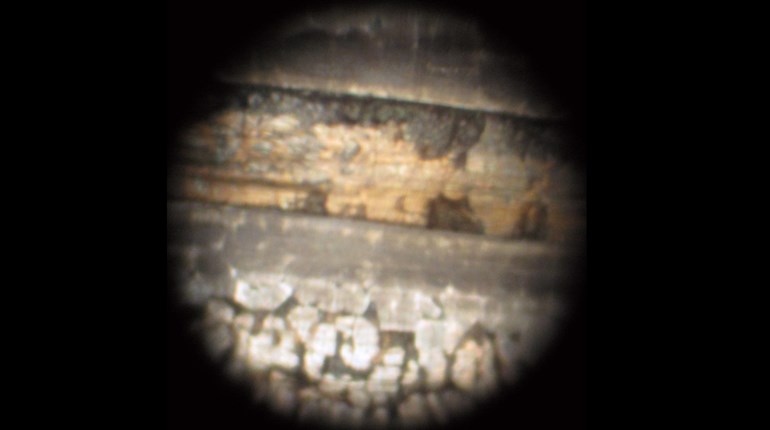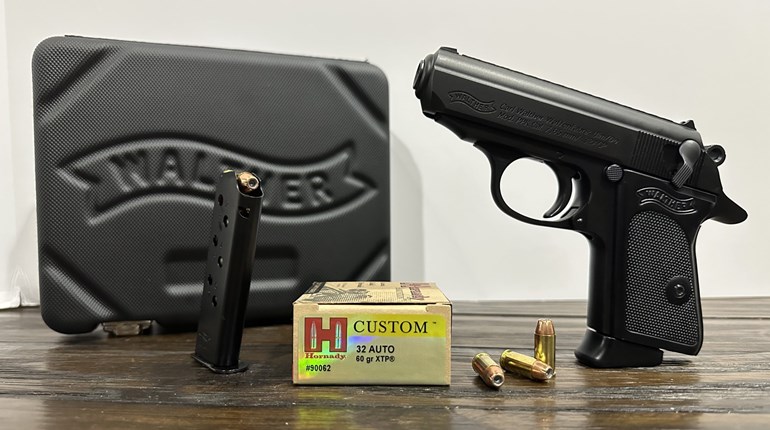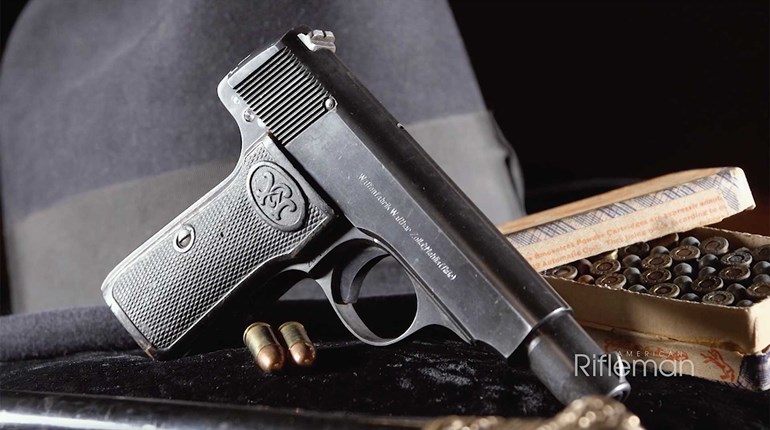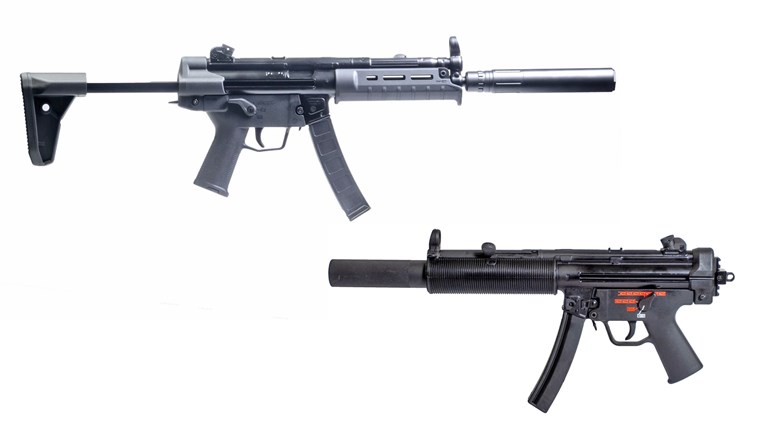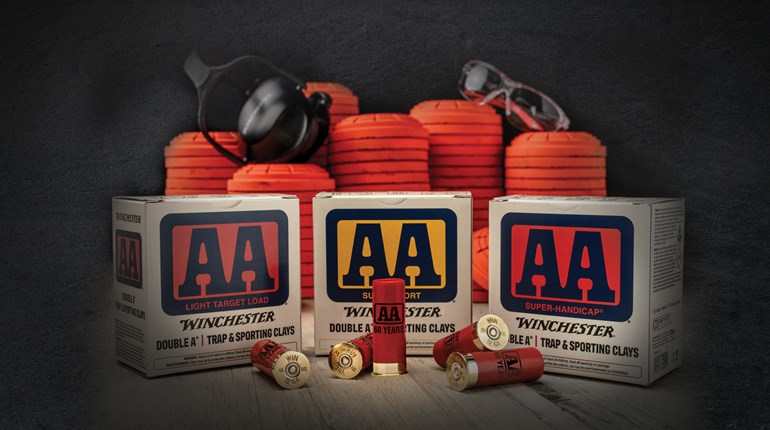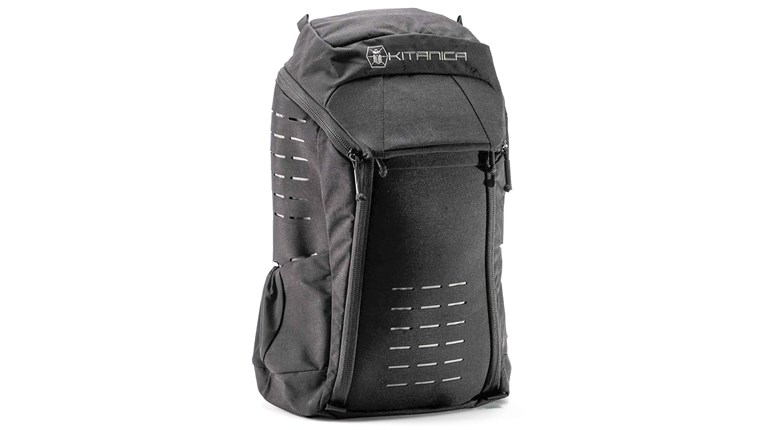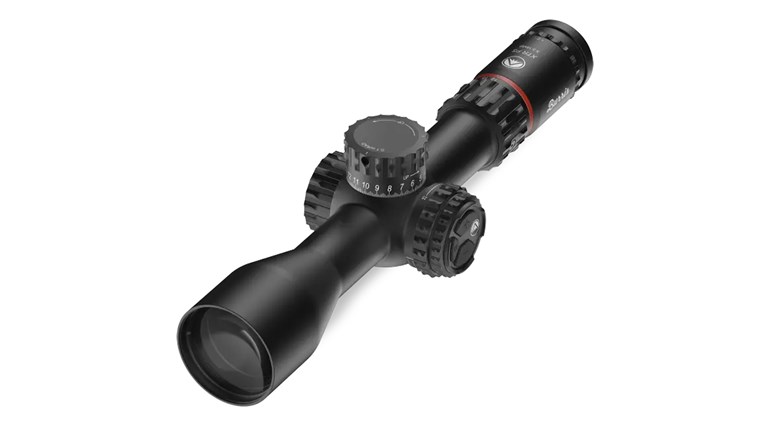
Above: In addition to being similar in overall length and size, operational pressures between the .32 ACP (left) and the 7.65 Browning (right) permit either cartridge to be used in semi-autos interchangeably.
I recently inherited a family heirloom that was carried by my great grandfather during World War I. It was made in Spain and appears to be chambered in .32 ACP.
The gun’s finish is worn and the grips are damaged, but otherwise it seems in good shape. I’d like to clean it up and shoot it, but I’m not sure what caliber ammunition it shoots as it has both “CAL 765” and “Paramount CAL 32” engraved into the slide. Could you describe how to fieldstrip the pistol and confirm what ammunition should be used?
W. Lohr
Madison, VA
According to your description, the pistol you have probably was one of many thousands produced for European Allies during World War I by Spain. The caliber references of 765 and 32 on the slide both refer to the same cartridge, which in modern day terms is the .32 ACP. You may also use cartridges labeled 7.65 Browning or 7.65x17 mm, which are similar in size, pressure and other characteristics necessary for safe shooting in your pistol. Field stripping your pistol for cleaning, inspection and lubrication is not difficult. First, don a set of safety glasses to protect your eyes. Next, remove any ammunition from your work area. While keeping the pistol pointed in a safe direction, remove the magazine and lock the slide to the rear with the safety/slide catch.
With the gun pointing away from you, rotate the barrel counter-clockwise until it stops. This disengages the barrel from the frame so it may be pulled forward and out of the slide. Some guns are a little more precisely manufactured than others, which may necessitate rotating the barrel back clockwise after it has been pulled forward to remove it from the slide.
Once the barrel is removed, hold the slide back against the tension of the recoil spring and disengage the safety/slide catch. Gradually, release the recoil-spring tension as the slide is removed from the front of the frame. A helpful hint when removing the slide is to ensure the hammer is cocked. If it isn’t, the slide cannot be separated from the frame. It is normal for resistance to come from the cocked hammer when removing the slide. This resistance can be overcome with thumb pressure or light taps from a plastic hammer.
Once the slide has been removed, the recoil spring and guide can be pulled forward out of the frame. Finally, the safety/slide catch should be removed from the left side of the frame purposefully, since it will fall out by way of gravity if the left side of the frame is tilted toward the floor for any reason.
Cleaning, inspection and lubrication can be done like any other firearm. I would recommend a liberal application of a good quality gun lubricant before reassembly to ensure the pistol’s smooth operation once it’s back together again.
Reassembly is done in the reverse order of disassembly starting with the safety/slide catch. Once the safety/slide catch is in place, seat the recoil spring and guide with the larger end going into the opening in the frame to hold the slide catch in position. Pull the slide onto the frame and lock it open with the safety/slide catch. Insert the barrel into the barrel opening of the slide, chamber end first, with the locking lugs toward the top of the slide. Once the muzzle of the barrel is even with the recoil spring guide, rotate the barrel clockwise to lock it into the frame. Tug on the barrel to ensure that it is seated properly. Then, release the slide forward leaving the safety/slide catch in the up position exposing the “S” on the frame. Be sure to function check the pistol after reassembly to verify it is ready to accept live ammunition.
Although these guns are somewhat crude by today’s standards, they can still be shot and enjoyed while remembering their previous owners.












